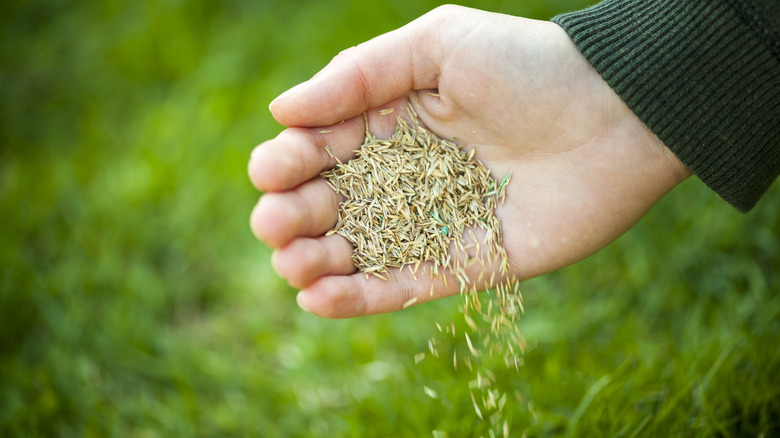When you are ready to plant a new lawn, you may be wondering whether you should plant grass seed or install sod. Deciding which way to go to give you the perfect lawn primarily depends upon the amount of time and sweat equity you want to invest in the project. Money is also a consideration when making this decision. As a general rule, planting grass seed costs less but requires more time and effort than the process of installing sod properly.
If cost is the primary consideration for you, you probably will be looking at making use of grass seed rather than purchasing sod. You can expect to pay an average of about $0.15 per square foot when planting seed versus around $2 per square foot when laying sod when doing the work yourself.
However, you also need to think about the cost of preparing the soil for both of these processes. You may need to remove rocks, existing plants, and tree stumps to prepare the area for becoming a lush yard. Also, consider the slope of your land. You may need to bring in topsoil to give the area a better slope when using grass seeds to ensure that water and rain don’t wash them away. This isn’t a concern with sod, as it won’t wash away through erosion, creating a shorter and cheaper prep process for you.
Pros and cons of planting grass seed

Beyond the cost benefit, one of the other biggest advantages of planting from seed is having the ability to choose among a wider range of grasses. Sod tends to offer more limited options — however, it is typically available in the most popular varieties.
With grass seed, you have more control over the soil and can precisely measure the nutrients that are available. If you are installing sod, it has soil included with it, which means it could be introducing insects or an unwanted layer of thatch into your yard space.
Planting grass seed has some significant disadvantages, especially if time is of importance to you. If wondering how long it takes for grass seed to grow, it depends on the variety in use. Some grass seeds can sprout in as little as a few days, while others may require as long as a few weeks. You must water the area regularly to provide the moisture needed for sprouting, and the new plants continue to need quite a bit of water. It’s possible that with all this watering and open soil, you could see a significant growth of weeds along with the grass plants, especially if planting in the spring, creating extra work for you.
Deciding whether you should install sod
The biggest advantage of installing sod is that you have a beautiful-looking lawn almost immediately. There’s no need to wait several days or longer for the grass seed to sprout because you start with adult plants. You do have to water sod regularly for a few weeks after installing it, so you can give the plants the ability to establish good roots that penetrate your existing soil. When installed properly, this established turf becomes hardy and usable in just a few weeks. It’s important to continue watering the space for the entire period that the turf company recommends. Sod could end up with a weakened, shallow root system without consistent water for the entire length of the suggested time.
Although sod should be relatively weed free, it is possible as you water that you may have some issues with weeds sprouting up out of the soil that came with the rolls of turf. You should not have as many problems with weeds when planting sod instead of grass seed, though.
When installing sod, you will need to be able to handle the heavy rolls of turf, which can weigh 30 to 40 pounds each. This type of heavy lifting, especially across a large yard, can take its toll after a few hours. Spreading grass seed evenly across a yard can take quite a bit of time, but it doesn’t require lifting as much total weight as the rolls of turf require.